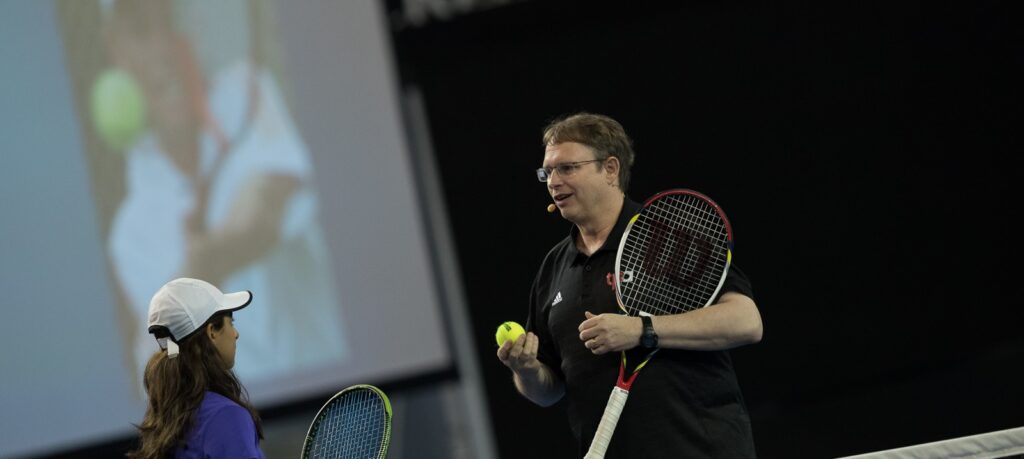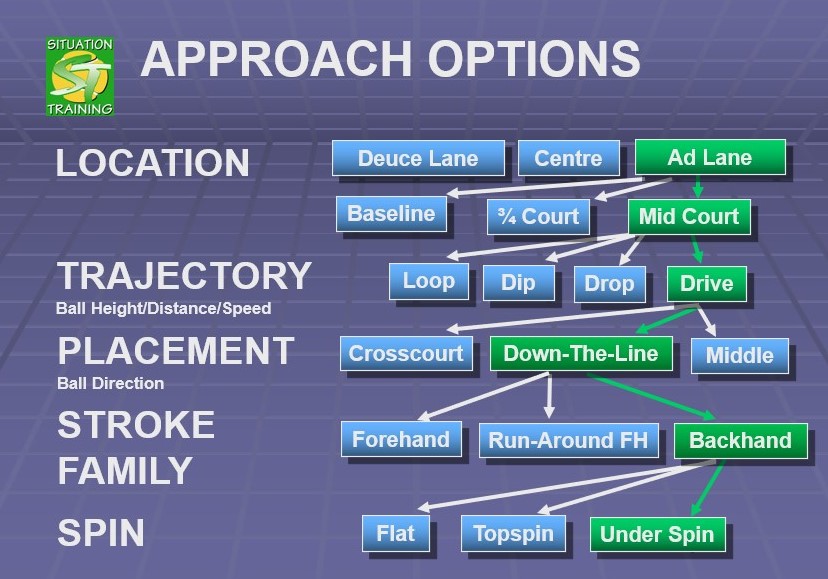

Photo credit: Front Row Studios -2017 Australian Open Grand Slam Coaches Conference
APPROACHING:
This article will explore the tactical categories and specific shots of the Approach & at Net Point Situation. The goal is to identify the most common shot situations that allow players to dominate when coming to and being at net.
Because this is a large topic, we will split all the information into two parts:
- Part 1: Approaching
- Part 2: At Net
Keep in mind that, practically speaking, approaching always flows into net play.
Approaching the net occurs in two main situations:
- Player Initiated Approach: These are options for when a player chooses to approach the net. They include ‘intercepting’ a high ball and ‘sneaking in’ when the opponent is seen to be in trouble.
- Opponent Initiated Approach: These are options for when a player is pulled in by an opponent. The player will be under pressure since they didn’t plan to approach but are forced into the situation. Hitting and moving back will most likely result in a poor response and location, so continuing to the net is the best option.
GEOMETRY OF APPROACHING
It is essential to maximize court coverage when approaching. Coming to net cuts off the opponent’s space, so attaining the best location provides the maximum advantages.
The court is a constant rectangle, so specific geometric angles must be mastered, like playing billiards on a pool table.
The Approach options ‘tree’ below outlines the main possibilities. For example, following the elements in Green down the tree, we see a ‘classic’ approach option of a shot from the Ad lane, midcourt, drive down-the-line on the backhand using underspin. (For a right-hander)

PRACTICING
It is most effective to train the approach coupled with the volley. Even when training volleys, the only time a player would start at the net is when playing doubles. Otherwise, their volley always flows from the approach they make and from where.
It is essential to train both player initiated and opponent initiated options. Opponent initiated approaches are often ignored in most training programs but happen regularly in matches.
Leave a Reply